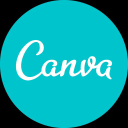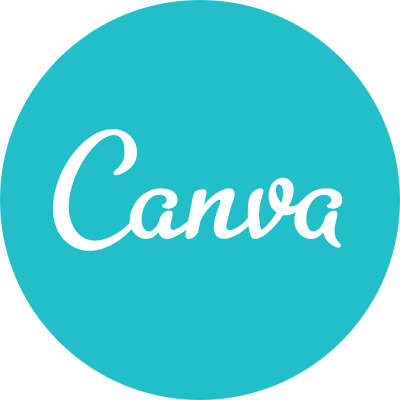I Created A $480K/Year Online Piano Lessons Business With $100
Hello! Who are you and what business did you start?
Hi! I’m Jacques Hopkins, creator of Piano In 21 Days. My online piano course helps adults of all ages learn to play piano as fast as possible. Most of my students are people who never had the time or failed piano lessons before. Some are retirees who are excited about a new hobby but don’t want to wait years for results. Others are busy parents or professionals who need a low-pressure, flexible learning schedule.
My business brings in five figures every month, and I built everything from the ground up. I knew I had a unique take on piano lessons, but I had to learn everything about digital entrepreneurship and marketing in real time. It took a lot of effort, but it worked: I quit my engineering job and have been supporting my family this way for over eight years now.

What's your backstory and how did you come up with the idea?
Books like The 4-Hour Workweek got me thinking about how to move on from the traditional career I had as an engineer. The book made me think about entrepreneurship was for me for the first time. It made me realize I didn't need a lot of debt, a big team, or a brick-and-mortar presence, to work like a crazy person. I didn't hate my job but I loved the idea of being able to work from anywhere and do cool things.
Then as a budding entrepreneur, I had an “aha moment” when I realized I was using piano to procrastinate! So I turned it into the focal point instead of a distraction. That’s how Piano In 21 Days was born in 2013.
Until then, Piano was simply a hobby to me. I wasn't (and still am not) that great at piano. I'm competent. And that's all most people want to be - competent. And I can get them there in 21 days.
Podcasts from other online course creators were key, since I knew what to teach but not how to reach my audience. My first sales were very hard-won, and there were times my wife and I weren’t sure if we were making the right decision. But this turns out to have been one of the best choices I’ve ever made.
I’d gotten the impression that all you had to do was release the course and the students would come, but that simply wasn’t the case.
I am still face of the brand and the main content creator, but the strength of my sales funnel, course structure, and customer support framework allow me to stay out of the nitty-gritty details most of the time. These days, I am free to spend time with family, work on other interests, and go on vacation easily with a business that mostly runs itself.
Take us through the process of designing, prototyping, and manufacturing your first product.
I’ve learned a lot since 2013, so I don’t necessarily recommend people follow the steps I did! I created course content first, beginning with the written curriculum and then recording video lessons for each section. I spent way too much time (8 months) and probably not enough money (about $100) on development.
Only after the course went live did I realize no one was going to chase down my course and buy it. I’d gotten the impression that all you had to do was release the course and the students would come, but that simply wasn’t the case.
Fortunately, sales did start to trickle in. The first notification on my phone got me dancing in line at Starbucks! That was a great moment, but to keep those moments coming I had to learn a lot about marketing and get my course in front of the right audience.
Since I’m not selling a physical product, it’s all about providing the best lessons and community for my students. I’ve spent a lot of time over the years listening to feedback and tweaking things as I go along. My website has evolved, the way I handle support has evolved, and I do not take my customers for granted. Student success comes first.
Describe the process of launching the business.
I started developing my course while still working as an engineer, but at a certain point, I quit my job to work full-time on development and release. Fortunately, I’d been able to save up a little money to support my family before quitting. My wife and I are very serious about paying off debt and planning, so we wouldn’t have just jumped into this without little savings to fall back on.
My first launch wasn’t well planned, because I had a “build it and they will come” mentality. And since I did almost everything myself, initial expenses were extremely low.
When I put my students first, that benefits everyone.
Since launch, what has worked to attract and retain customers?
YouTube has been one of the main sources of traffic for Piano In 21 Days. We publish bite-sized lessons on specific topics. Or high-level overviews of the piano to show that it isn't that hard. I don't worry about overlapping with my course because people buy the course for a transformation. They watch a YouTube video for one small thing
I’m so glad I got started on YouTube early because it was a low-cost way to build interest and help people find my resources. To this day, some of my earliest YouTube videos still perform well. I believe that’s because I’ve focused on creating high-value evergreen content.
Having a strong sales funnel is what turns that traffic into sales. I first learned about funnels from Pat Flynn’s Smart Passive Income podcast. He had a guest on sometime in 2016 -David Siteman Garland- that talked about his funnel for his online course. I set up that same funnel for myself and have had the same funnel ever since.
My team proactively seeks out testimonials from students, and we share them on social media and throughout my sales funnel. Piano In 21 Days has excellent ratings on TrustPilot, which is a point of pride for my team and me - and great social proof for new potential students. Sometimes I do student interviews to post in our community and on YouTube, which is always very inspiring.
I do regular live Q&A sessions, which helps me keep a finger on the pulse of the community and learn what might appeal to others in my audience. I offer as much value as I can while keeping things as scalable as I can.
I’ve also honed in on my sales funnel and made a lot of effective changes over time. I now do regular launches and promotions to my email list, keeping my communications personal whenever possible. If I’m not answering an email, then someone on my team is, and we are serious about doing our best to help.
How are you doing today and what does the future look like?
Piano In 21 Days has been profitable for a long time now. We’ve had ups and downs especially due to the pandemic, which has been interesting to watch but thankfully not too bad. Being in a digital marketplace provides a lot of flexibility that brick-and-mortar businesses or in-person teachers don’t have.
Build your audience first. Don’t do what I did and create a product that almost no one was waiting for!
My small team helps me with project management, content production, customer support, and marketing. We check in with each other as needed and meet weekly to plan and troubleshoot. For the most part, operations run smoothly and very few fires need to be put out.
Short-term, we are working on improving our strategy and expanding our YouTube and social media content. Long-term, I expect that to build sales and help me reach even more people in our target demographic.
Through starting the business, have you learned anything particularly helpful or advantageous?
I’ve learned so much over the years, not only from my own mistakes and successes but from other course creators. My Online Course Guy podcast was instrumental in connecting me with other people in this digital business space and gave me a chance to hear what works (and doesn’t) for others. At times I’ve sought out coaching or mastermind groups to help me identify strategy changes I need to make, too.
When I put my students first, that benefits everyone. Listening and evaluating what I hear from students is what has shaped my resources and updates more than almost anything else. It’s not just about the money for me, but happy students keep my business humming along happily too!
What platform/tools do you use for your business?
My websites are currently all on WordPress. I use BuddyBoss and LearnDash for my course content and student community. I also have a Facebook group, since some students prefer that.
ActiveCampaign, ClickFunnels, and Deadline Funnel are all big pieces of my sales funnel. I love using Bonjoro to personally welcome every single one of my students to my course. And my team and I also use BerryCast to send video messages and personalized support.
Internally, we use Asana for project management and Slack for team communications, plus many Google Workspace apps. Canva and SocialChamp have been helpful for social media content production.
What have been the most influential books, podcasts, or other resources?
The 4-Hour Workweek was very instrumental in where I am today, and since then many other books and podcasts have proved helpful. A few that come to mind are Expert Secrets, StoryBrand, Profit First, and $100M Offers.
Advice for other entrepreneurs who want to get started or are just starting out?
My best advice for new online creators? Build your audience first. Don’t do what I did and create a product that almost no one was waiting for! Lay a foundation for future sales by doing market research. Be intentional about developing an audience that is excited about what you are planning for them.
Create as much consistent and high-quality content as you can, and show your audience that you understand what they need. When you listen and respond authentically, the right people will resonate with what you have to offer.
Where can we go to learn more?

Download the report and join our email newsletter packed with business ideas and money-making opportunities, backed by real-life case studies.

Download the report and join our email newsletter packed with business ideas and money-making opportunities, backed by real-life case studies.

Download the report and join our email newsletter packed with business ideas and money-making opportunities, backed by real-life case studies.

Download the report and join our email newsletter packed with business ideas and money-making opportunities, backed by real-life case studies.

Download the report and join our email newsletter packed with business ideas and money-making opportunities, backed by real-life case studies.

Download the report and join our email newsletter packed with business ideas and money-making opportunities, backed by real-life case studies.

Download the report and join our email newsletter packed with business ideas and money-making opportunities, backed by real-life case studies.

Download the report and join our email newsletter packed with business ideas and money-making opportunities, backed by real-life case studies.












